

ASI120MINI

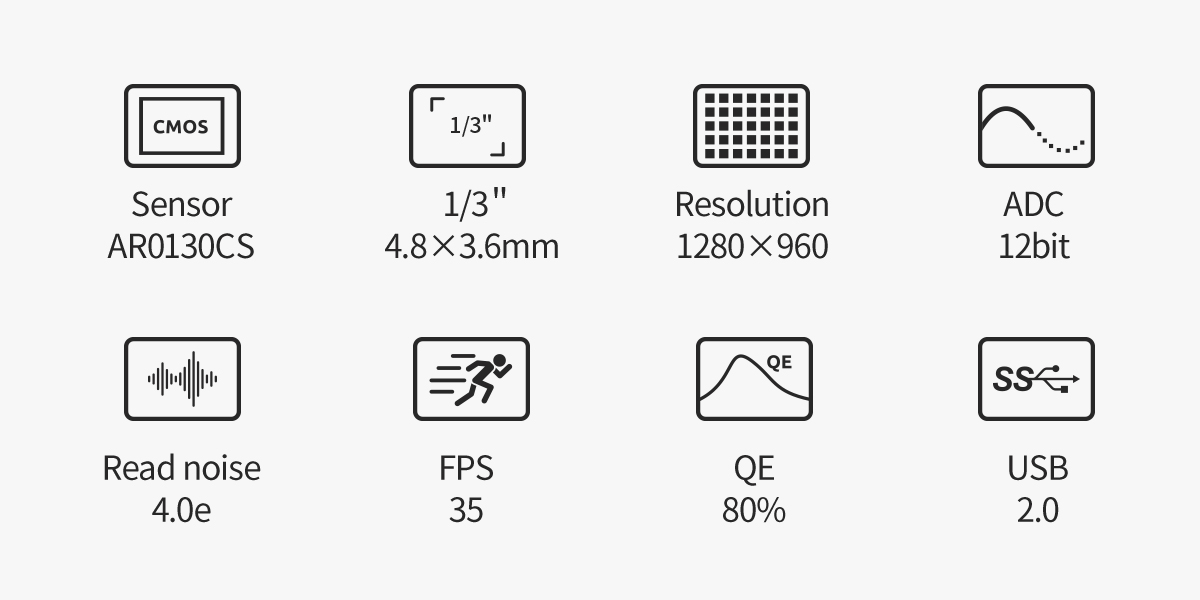
Camera Sensor
The ASI120MM Mini camera integrates the AR0130CS 1/3″ sensor (4.8 mm x 3.6 mm). It is a new model in the “mini”-series of cameras from ZWO. This camera has 1280 x 960 pixels with a pixel size of 3.75 μm x 3.75 μm. It provides 12-bit ADC and the QE peak is almost 80%.
Astrophotography Performance
The ASI120 mini-camera offers you very good performance for planetary imaging as well as for guiding. Low read noise, high dynamic range, AR protective window and much more are just some of the key characteristics that set it apart from the competition.
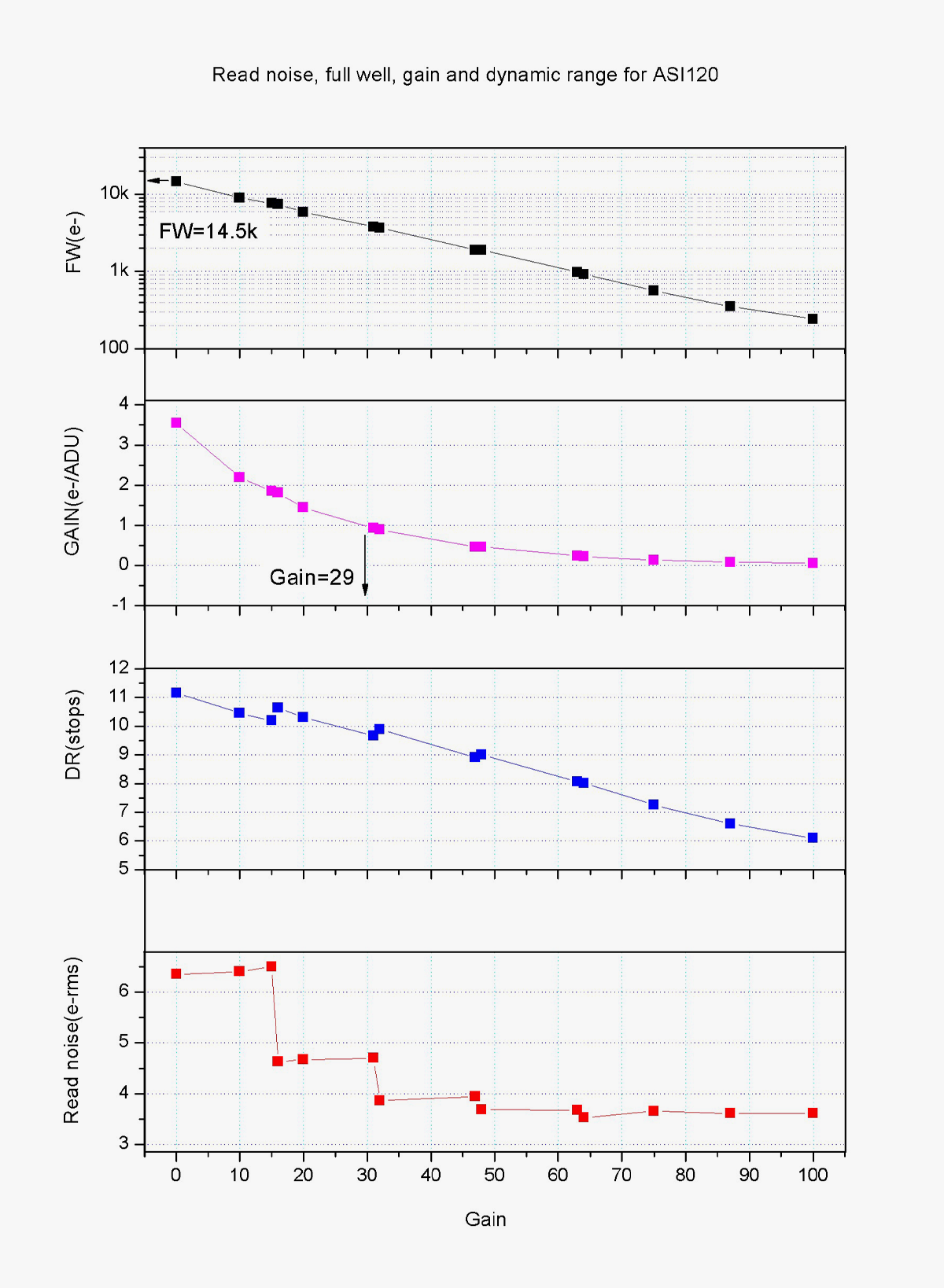
High QE
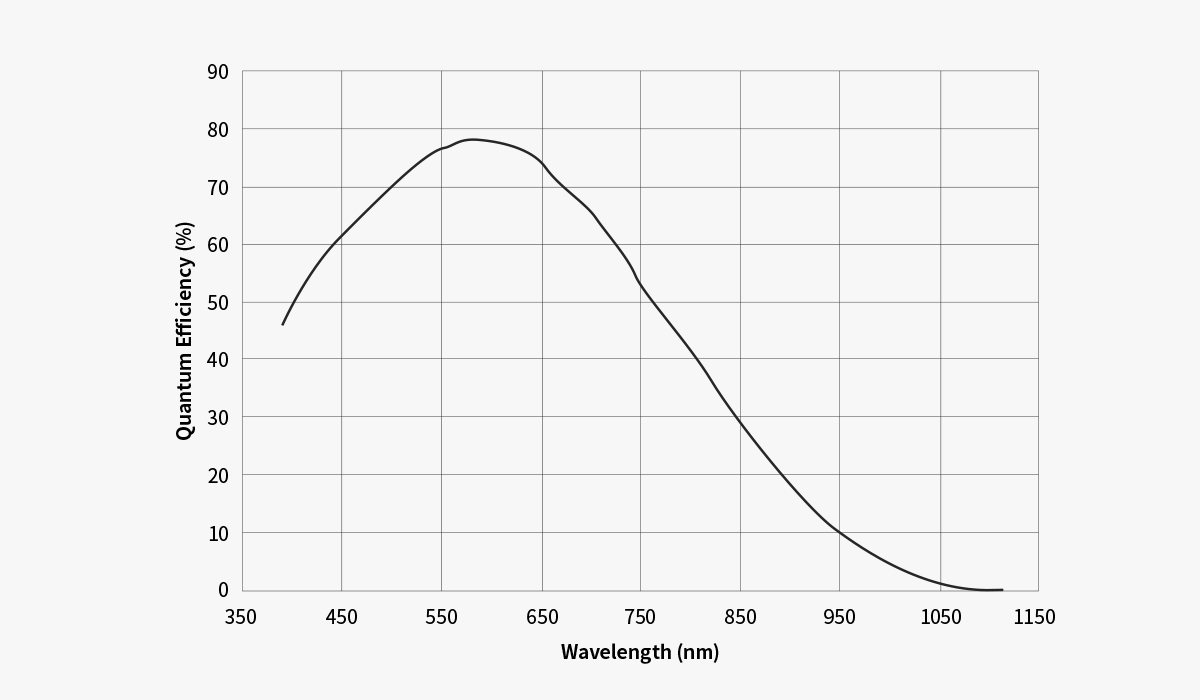
120Mini VS 120MM-S
Compared with the ASI120MM-S camera, the new 120-Mini has a sleeker design, less weight, and it can reach focus at the same position as an eyepiece.
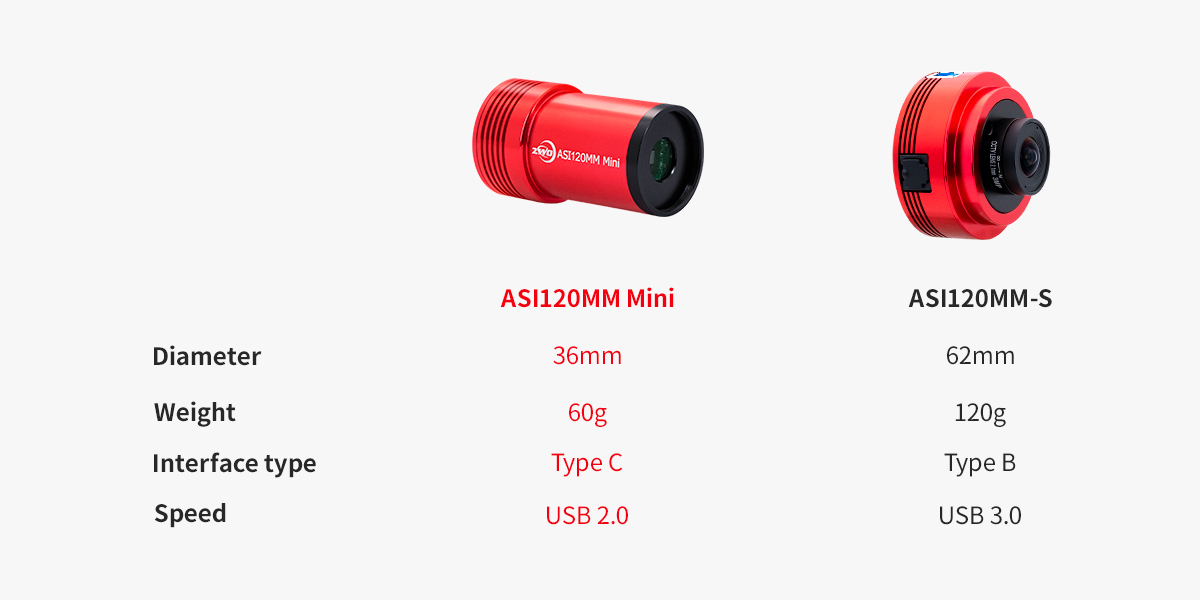
USB2.0Port & ST4 Port
USB 2.0 Port: Mini camera has one USB2.0 type-C port. Type-C port is very popular in mobile phones, as it doesn’t matter which way you connect it (unlike for example type-A or type-B)
#USB-C to USB-A cable is required.
ST4 Port: The camera can be connected directly to the auto-guider port of the mount.
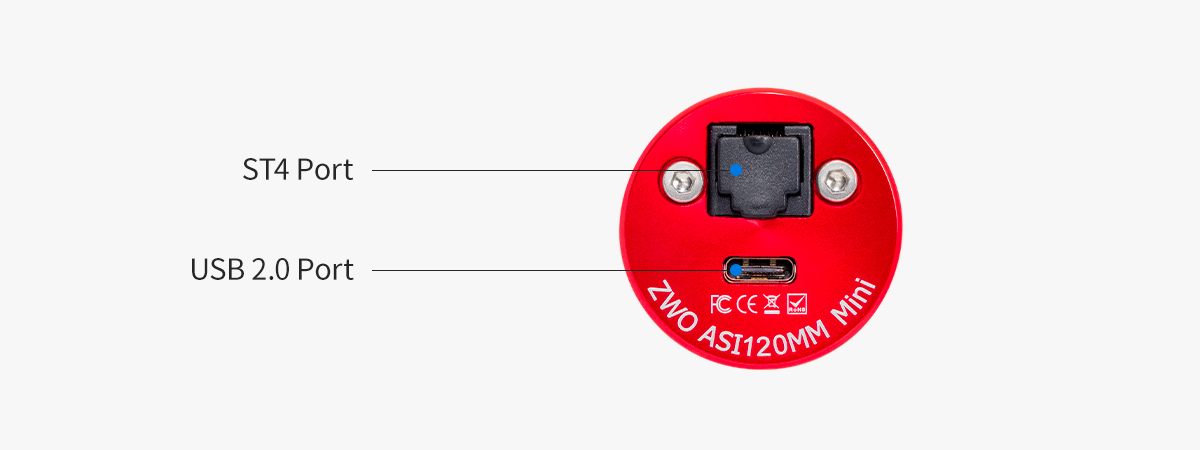
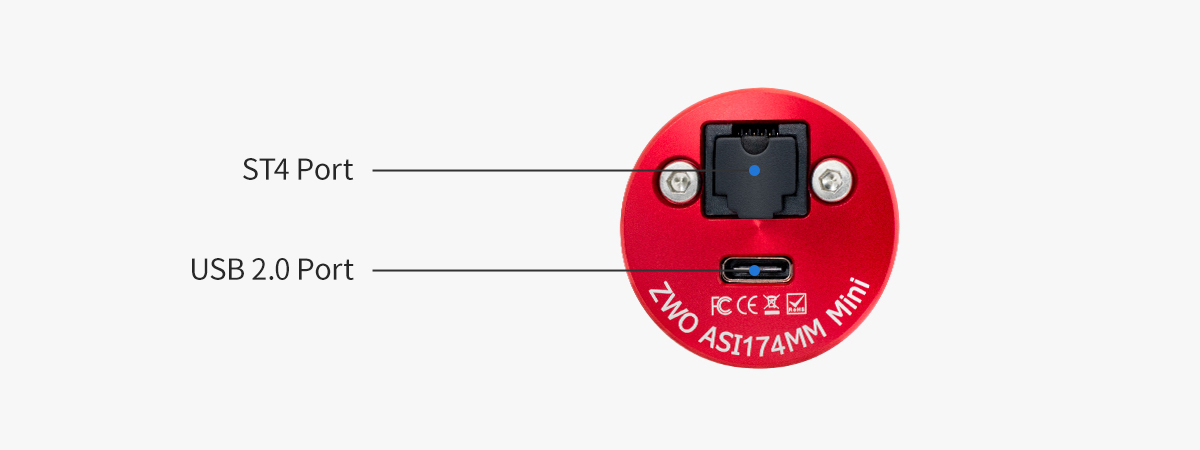
Connecting Drawing
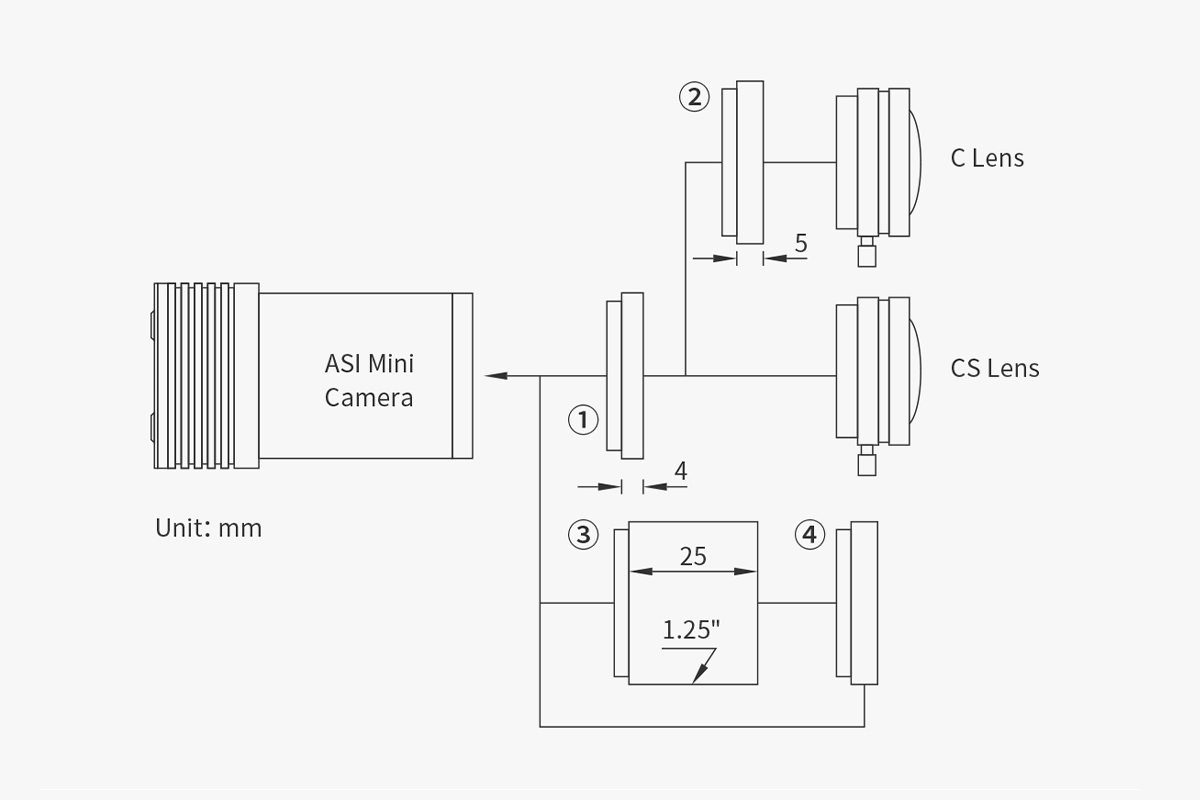
- M28.5-CS adapter
- CS-C adapter
- 1.25″ extender
- 1.25″ filter
Mechanical Drawing
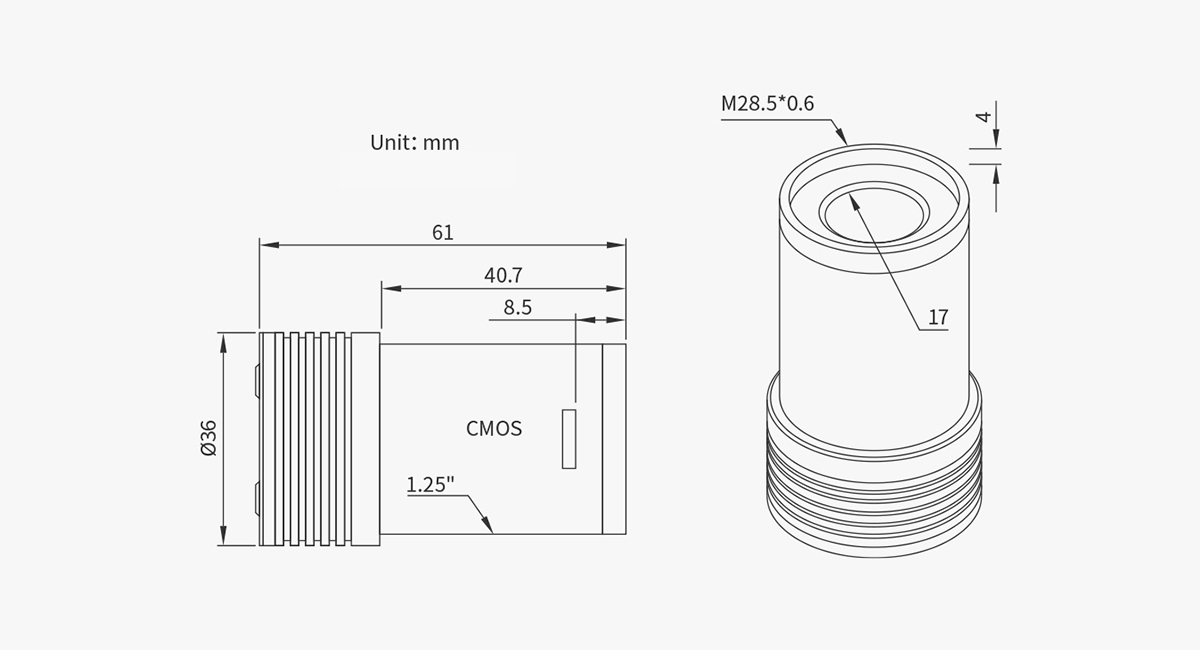
What is in the box?

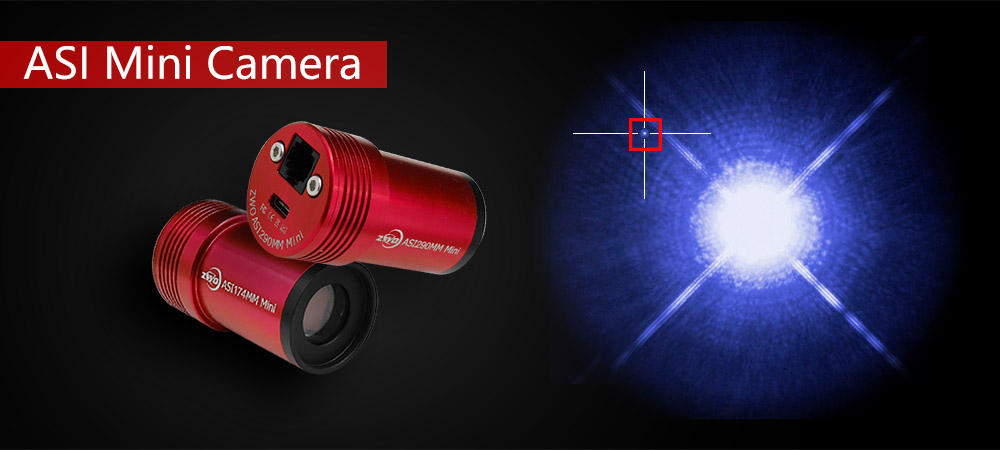
ASI120, ASI174 and ASI290 mini camera have very beautiful outlooks, small size, light weight, this is not a big deal.
We should consider much more…
ASI120, ASI174 and ASI290 mini-cameras all have an appealing design, small size, light weight and much more. And while we are very pleased with the looks of our products, of course what matters the most is how well they perform in their intended use…
How to choose a good guide camera?
Many people might mention the size, ability to fit with different types of equipment (guide scopes, OAG etc.), stability and ease-of-use.
We agree. That is why our cameras in the “mini”-series all fulfill these, what we think are, basic characteristics of a good guide camera.
But what are truly the most important traits. Let’s face it, when you set up your equipment for a night of imaging, you just want things to work and to see that smooth graph on your guiding software before you start your imaging sequence. In order to do that, there are some things to consider (apart from the points mentioned above):
- Sensitivity,
- Precise guiding,
- Big FOV.

High Sensitivity
Sensitivity is the first thing we considered. This is of course a crucial ability when looking for a star to guide on. So, from the beginning, we were set on using monochrome sensors to design our guide cameras. Because monochrome sensors have much higher sensitivity than their colour counterpart. Luckily the ASI120MM Mini, ASI290MM Mini and ASI174MM Mini all have very high QE peak value – about 80%, which can detect more stars in view and shorten the exposure time in guiding.
Each of the cameras have their own strength and depending on what you value in a guide camera, one might be better for you than the others.
Entry Level
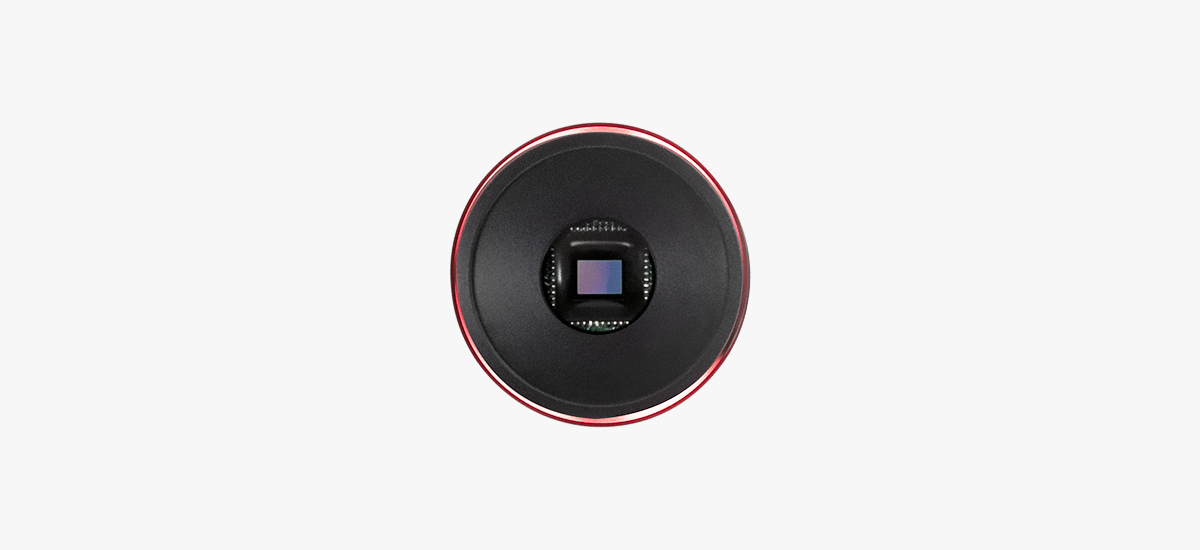
ASI120MM Mini is designed for newcomers, it is more affordable than ASI290MM Mini and ASI174MM Mini. You can easily get the well-sampled stars with the help of ASI120MM Mini. It’s light, compact and robust. If you are still wondering about which one you should choose as your first guide camera, the ASI120MM Mini is a very good choice.
Precisely Guiding
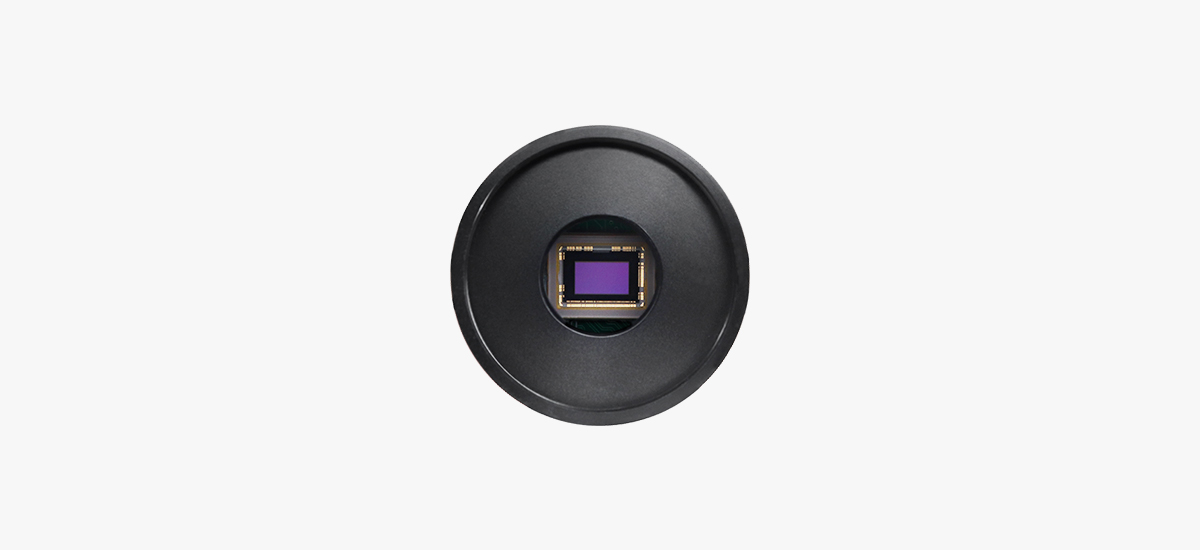
ASI290MM Mini is designed for precise guiding. The 2.9um pixel size gives you a higher arcsec/pixel than the ASI224 or ASI120 camera. This means that, in the same guide scope, the ASI290MM Mini can detect movement of stars to a higher degree than the other cameras. ASI290MM Mini will improve your guiding precision with around 30% compared to the ASI120MM Mini.
Big FOV

ASI174MM Mini is designed for large field-of-view guiding. This is very useful when looking for a star to guide on, using an OAG. When you use an OAG-guider with a Ritchey-Chretien or Schmit-Cassegrain telescope, the hardest part is to find a suitable guide star. ASI174MM Mini has a larger 1/1.2″ sensor which means your FoV is 4 times bigger than that of the ASI120MM Mini.
Smiling Face
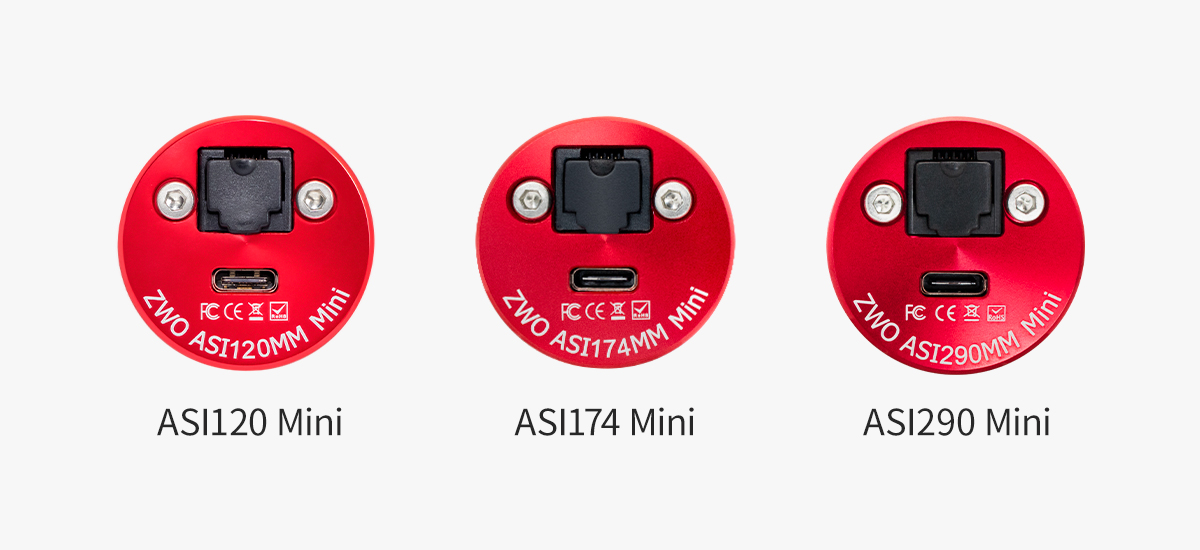
If you squint your eyes, the back of the ASI mini-camera looks like a smiling face (albeit you have to squint quite hard). On the back you will find a type-C USB port, which is widely used in mobile phones. The ST4-port is used for auto-guiding on mounts. So if you are having one of those observing nights when Murphy’s law is by your side, at least you’ll have an excellent guide camera (that smiles at you).

